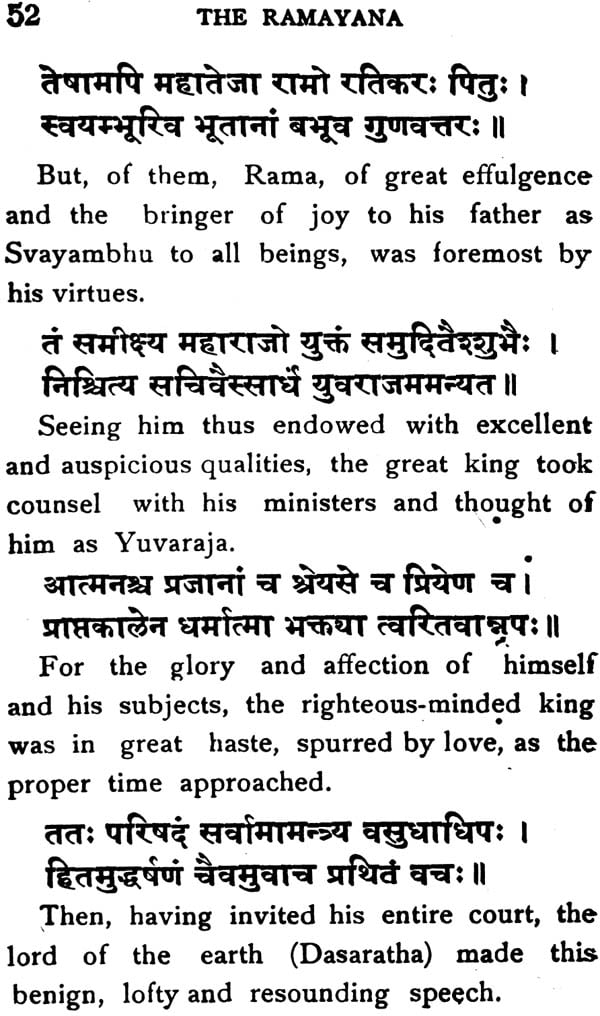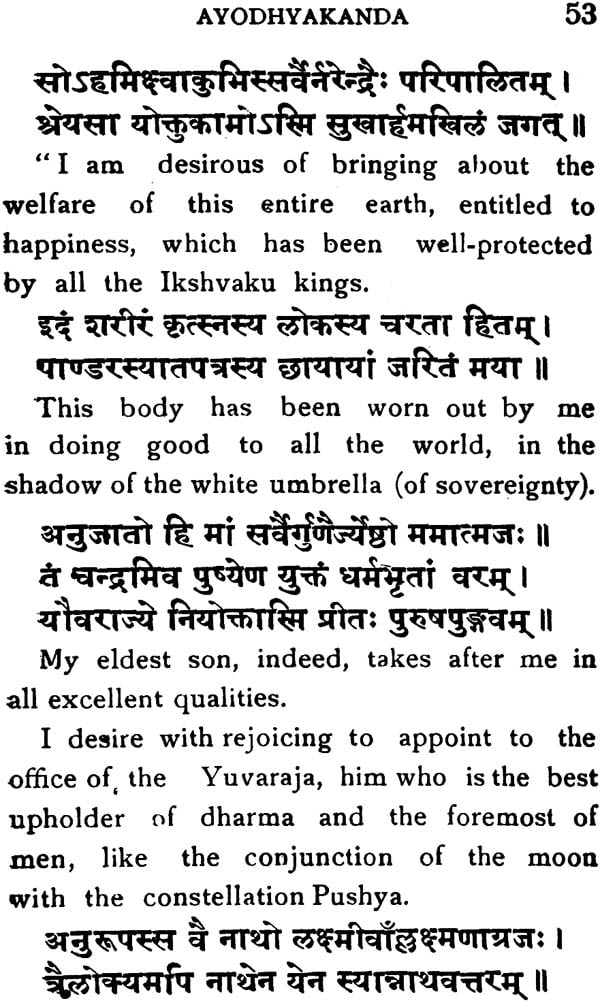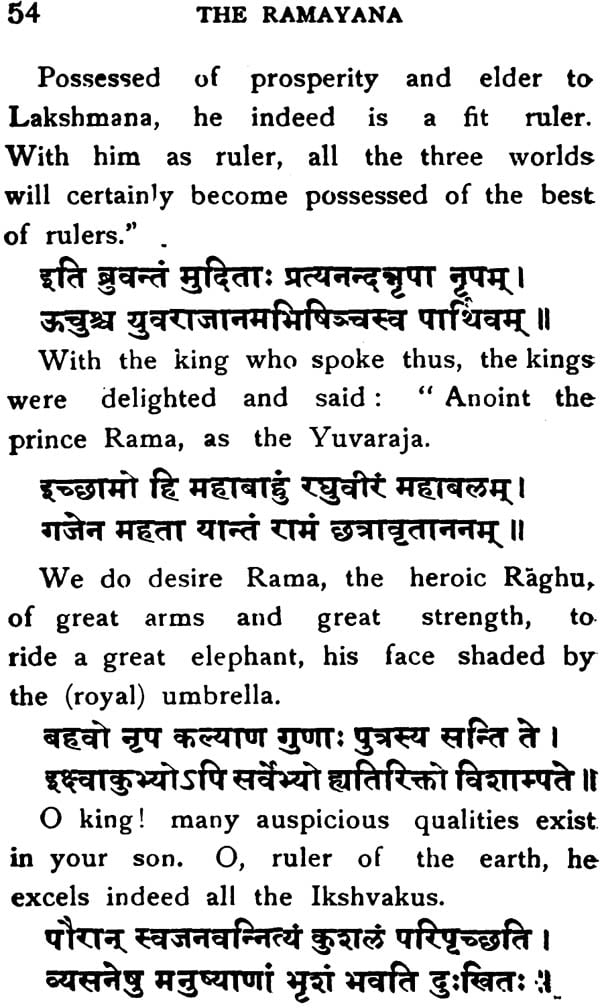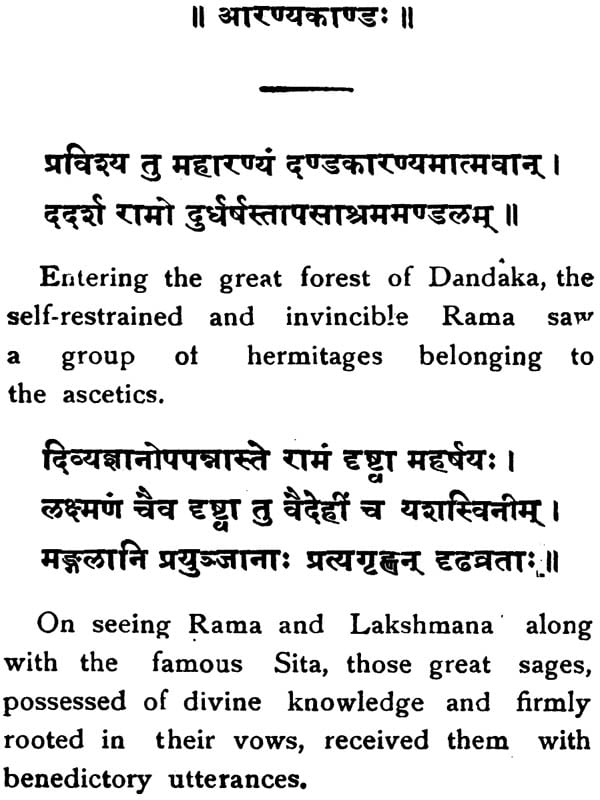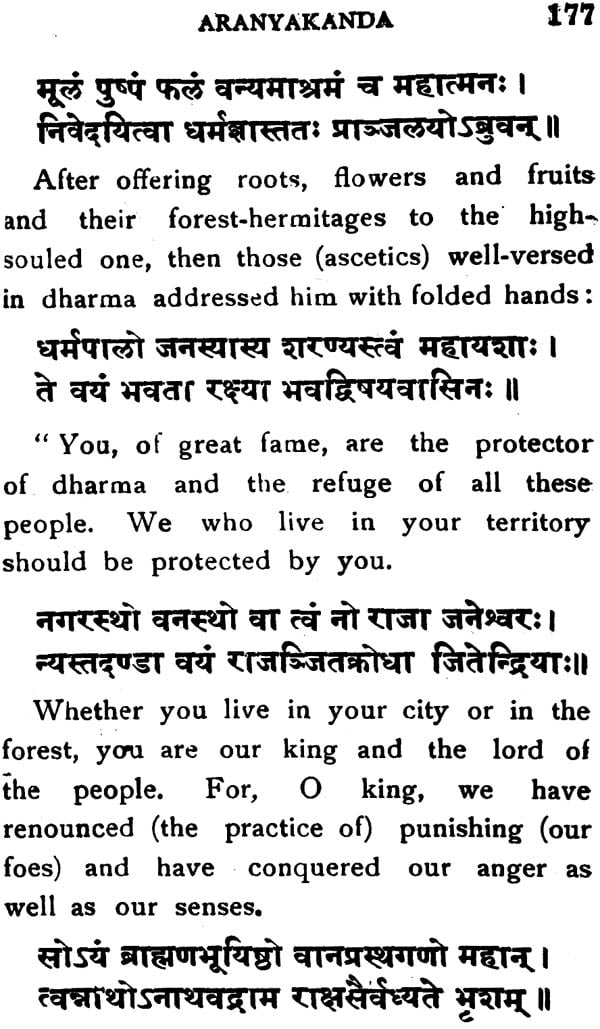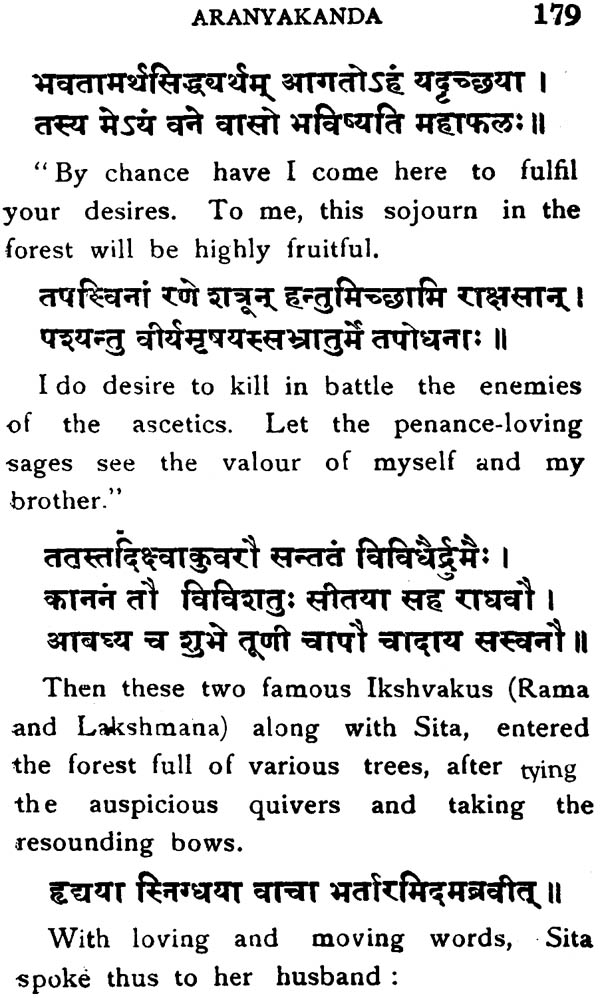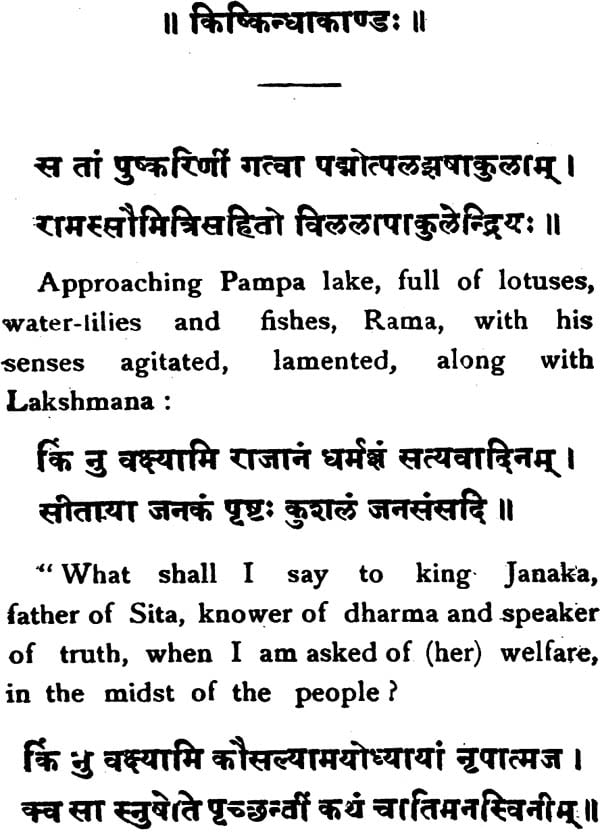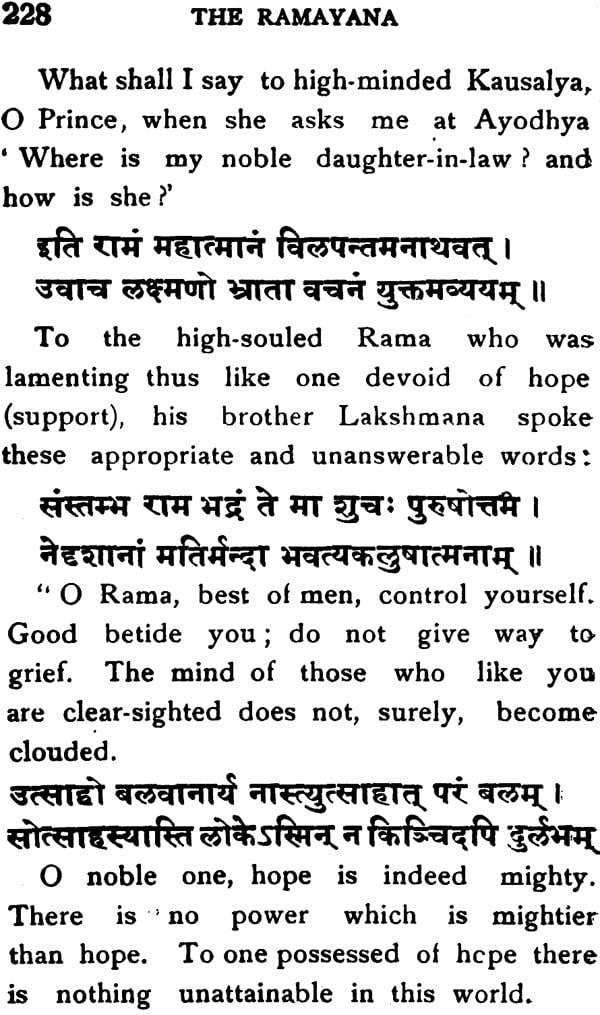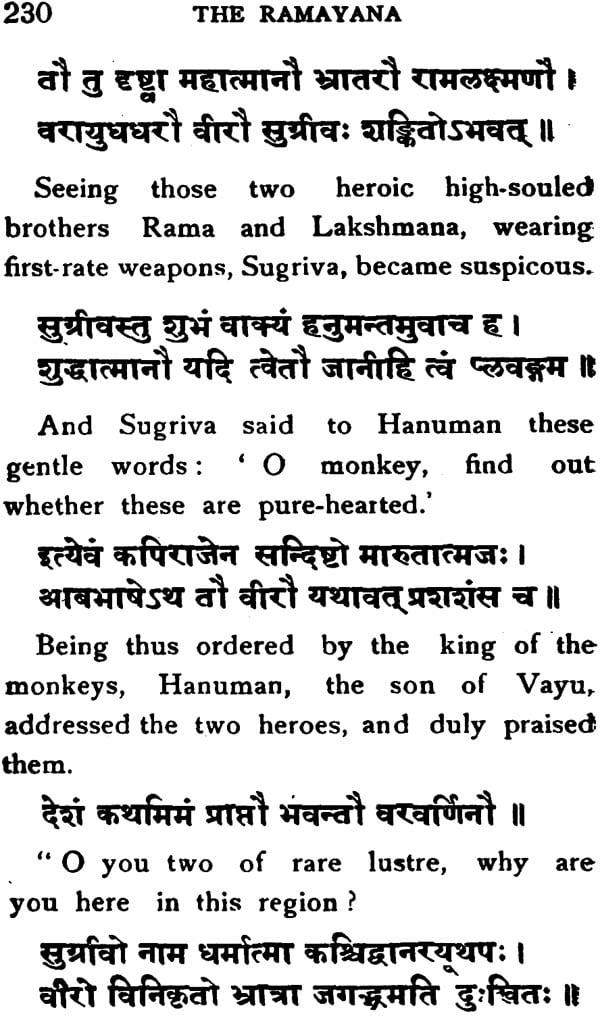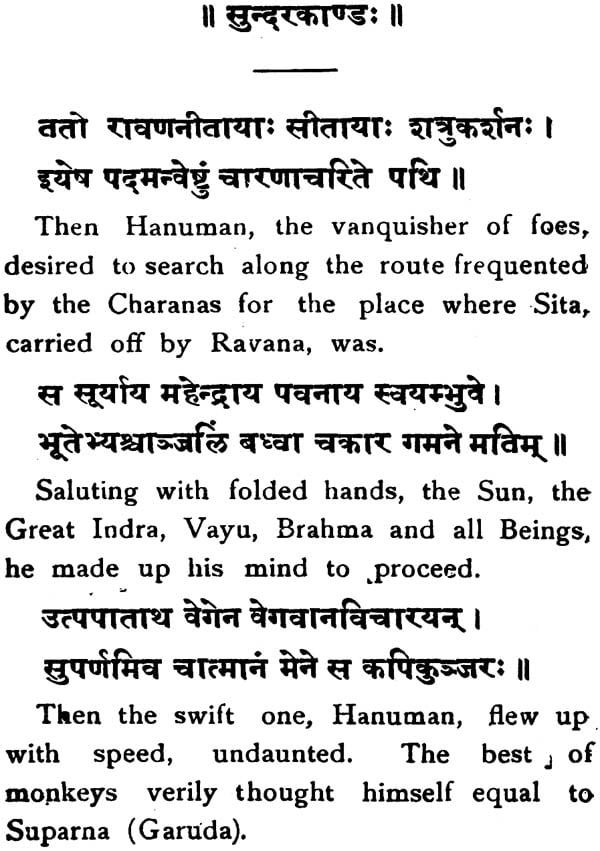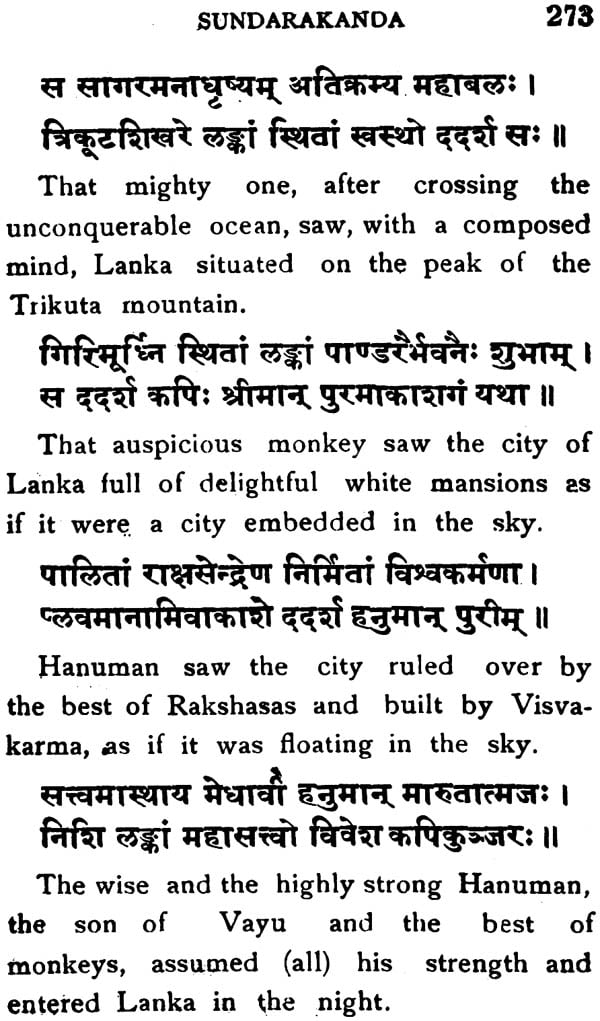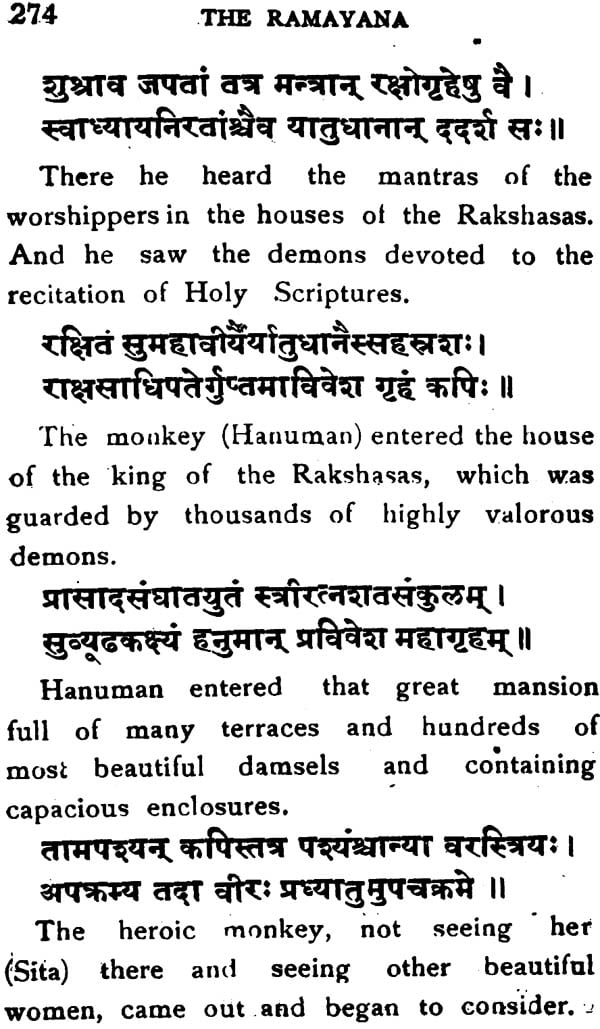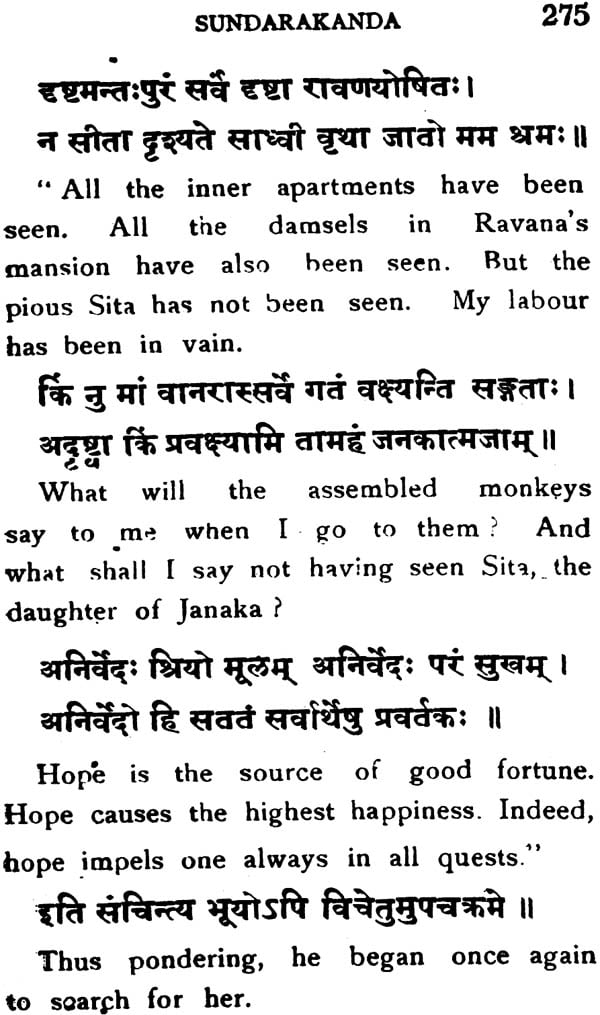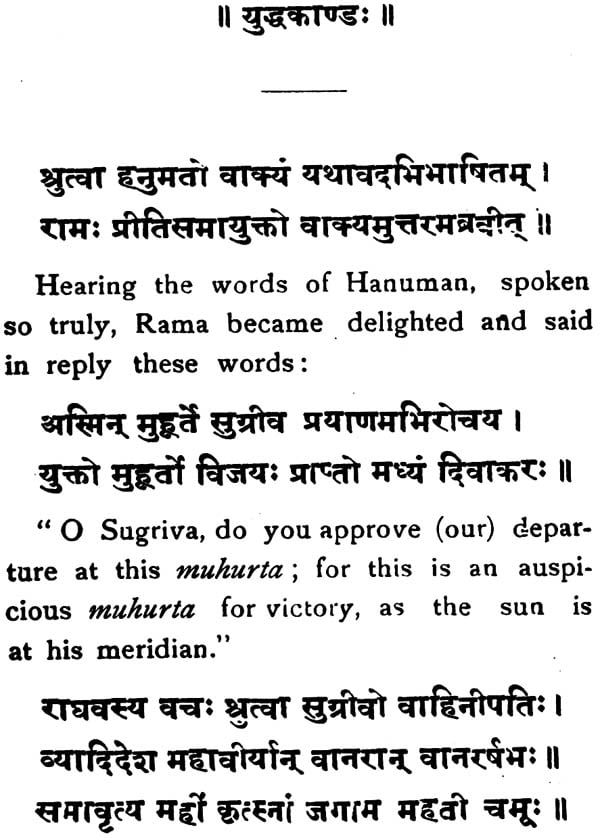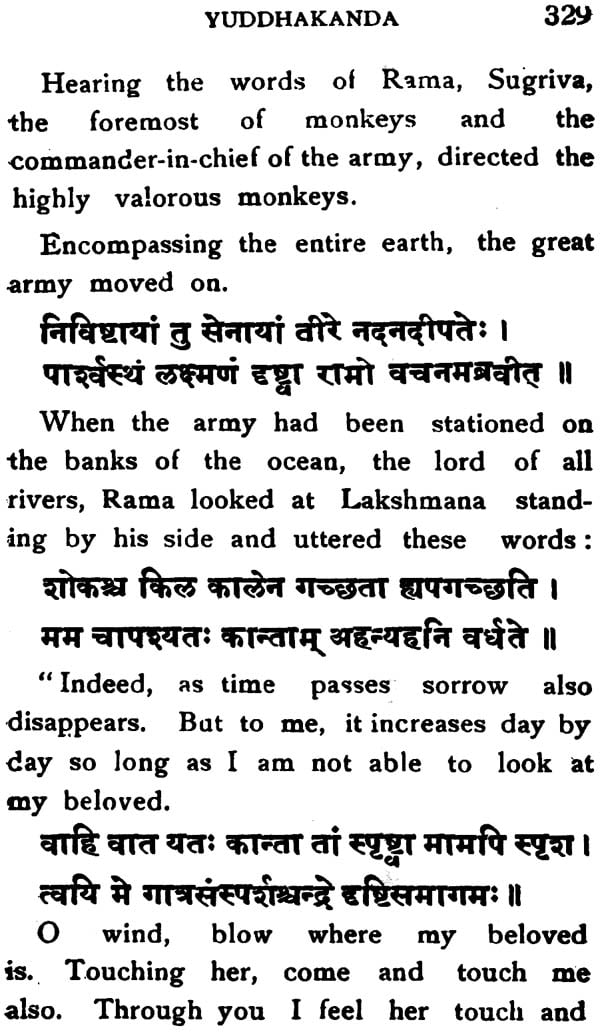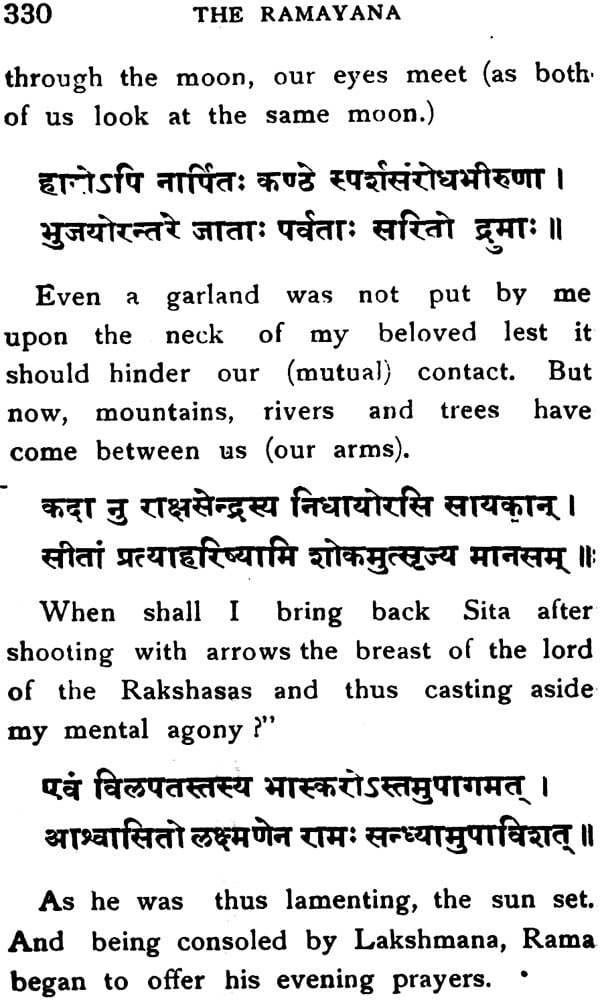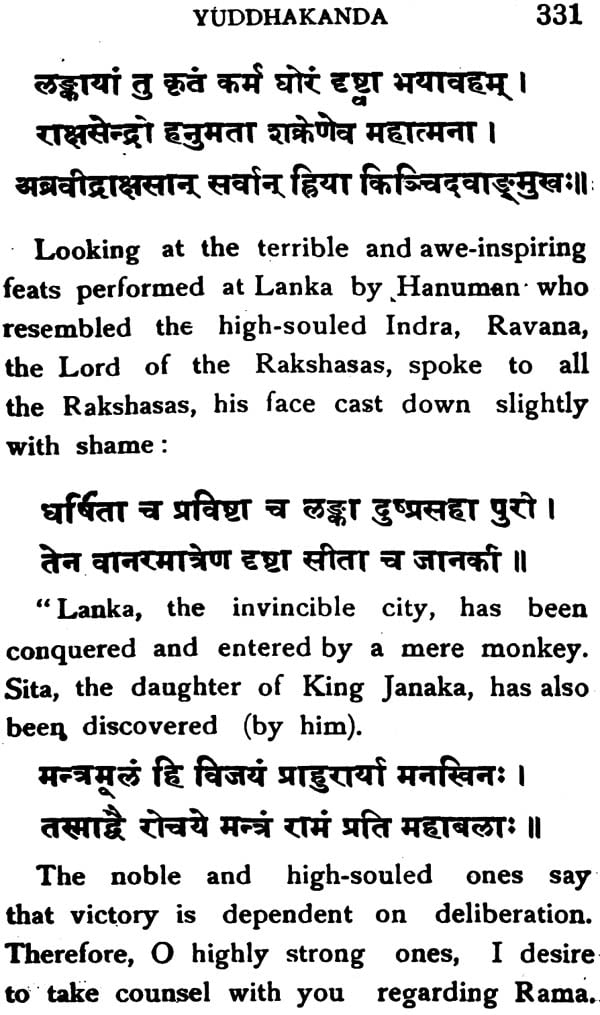
Valmiki Ramayana (Condensed in the Poet's Own Words)
Book Specification
| Item Code: | NAL422 |
| Author: | P.P.S. Sastri |
| Publisher: | THE KUPPUSWAMI SASTRI RESEARCH INSTITUTE |
| Language: | Sanskrit Text with English Translation |
| Edition: | 2015 |
| ISBN: | 8185170177 |
| Pages: | 434 |
| Cover: | Paperback |
| Other Details | 6.5 inch x 4.0 inch |
| Weight | 300 gm |
Book Description
Preface
It is indeed with great pleasure; the Institute is bringing out again the book “Valmiki Ramayana” condensed in the Poet’s own word by Prof. P. P. S. Sastri and Sri A. M. Sri A. M. Srinivasachariar along with English translation by P. P. S. Sastri himself. The book was published originally by G. A. Natesan and Co., Madras, more than seven decades ago in 1935. By 1953 it had seen six editions due to heavy demand from the reading public of the time. In 1997, after a long gap, the book was brought out by the Institute to commemorate the Birth-Centenary of Prof. P. P. S. Sastri the Birth-Centenary of Prof. P. P. S. Sastri
Vidyasagara Vidyavacaspati Prof. P. P. S. Sastri, B.A. (Oxon), M.A. was one of the rare scholars of Sanskrit and Indological studies who lived during the first half of this century. A contemporary and colleague of Mm. Prof. S. Kuppuswami Sastri, he had been one of the members of the formative committee of the Journal of Oriental Research published by our Institute and was also a life member of the Institute.
The foreword to this book by none other than the great Rt. Hon’ ble V. S. Srinivasa Sastriar is a lesson by itself on the art of condensation and translation.
Sri G. A. Natesan ardently wished to publish the three great sacred literature of India, the Ramayana, the Mahabharata and the Bhagavata. In this endeavour, he had the cooperation of Sri A. M. Srinivasachariar in condensing the texts in the poet’s own words and of Sri P. P. S. Sastri in translating the Ramayana and Dr. V. Raghavan in translating the Bharata and Bhagavata.
The Institute brought out the revised editions of the Bharata and Bhagavata in 2008 to commemorate the Birth-Centenary of Dr. V. Raghavan who translated them into English.
There seems to be a renewed interest in reading these classics among the public. Especially, these condensed texts and translations have received good response from scholars and common men alike. To meet the need of the hour, the Institute is once again bringing out all the three books together for the benefit of all and in a subsidised rate. It is hoped that these great Indian literature would find their way all round the world.
Foreword
What is the Ramayana, ask some, without its charming descriptions, its edifying dialogues, its luminous excursuses? No scholar will deny the value of these. But the bare narrative has its own appeal. The pathos and the human interest dwell at the very heart of the story. The events are the interactions of the simple tendencies and passions of our nature, obscured but little, if at all, by the splendours of the palace or the pride, pomp and circumstance of glorious war, In the few pages of this little book the philosopher will see impressive illustrations of cause being followed inevitably by effect, of the strange beliefs passing under the names of Karma, rebirth and destiny, of the curious blending of piety and superstition, morality and custom, this world and the next, and of the generalisations of experience in private and public affairs enshrined in proverbs, apophthegms and rules of chivalry and statecraft, which indicate millennia civilisation behind. If the reader but bring a little capacity to reflect and learn, he will find himself wiser and better when he closes the volume than when he began it.
Those that have essayed literary tasks will appreciate and enjoy a certain feature of this enterprise. There is nothing in this abridgment which is not Valmiki’s large portions of the original epic have been cut out; but the portions that are retained is effected in the poet’s own words. No vestiges are visible of the dismemberment, no transfusion from a foreign organism, no prose Links, no variation from the anushtubh metre. The compiler, Pandit A. M. Srinivasa Achariar, has necessarily been driven to strange shifts. But I have not seen his vandalism go lower down than quarters of slokas. Perhaps here is not even one case of four several quarters being lifted from four several verses and fitted together to form a new one. But every now and then I have marvelled to observe how a quarter has been grafted from one context to another context far removed but with every appearance of having always belonged there. Eloquent testimony this to the research and ingenuity of the compiler as well as to the rich copiousness of the oldest of the world’s epics.
I trust I may be allowed without impropriety to bestow a well-merited meed of praise on the translator. My friend Vidyasagara Vidyavachaspati Professor P. P. S. Sastri has had an exceptionally difficult task. To turn ideas from one language to another while preserving their spirit and true quality is recognised as one of the rare triumphs of scholarship. Mr. Sastri has had in this case to bear in mind the needs of the young student of Sanskrit. Close conformity is required, word answering to word and clause to clause. The voice and mood of verbs and the forms of sentences, whether assertive or interrogative, have to be reproduced wherever possible. On the top of all this, there are the vocatives and the epithets which are strewn about with a prodigal hand. These last in particular cause dismay to the poor translator. In smooth and charming lilt of the classic, they are in their natural setting and hardly noticed. But force them into an English dress, and you at once give them excessive prominence. The reader is apt to ask what they are and why they are there, hut the answer in many cases will be unconvincing. These and other similar considerations must not be lost sight of in appraising Mr. Sastri’s performance. After giving them full weight the critic, far from cavilling, will be ready to endorse my appreciation.
Introduction
In all climes and in all ages, Poetry has been conceived more as an intuitive art than as otherwise. In India, too, the first great poem, first because of the production being the work of the earliest known human author in Indian Literature and great because of the unanimous verdict of posterity, was born of the Poet’s innate pratibha. Valmiki is the earliest poet known to classical Sanskrit Literature and has been the pattern to all subsequent aspirants to the Poet’s mantle. The Idea of the Poem arose in him, not on account of any external urge to create a work, but as the expression of the spontaneous overflow of one of the most consuming sentiments of the human mind, the sentiment of karuna or compassion for the afficted and the distressed. In giving expression to this sentiment, Valmiki’s words set themselves to rhythm and cadence suited to the occasion; and we have the most beautiful, melodious, stirring and artistic poem, as the result.
The Ramayana is a mirror of the highest ideals of Hindu culture and civilisation. Herein is described the ideal hero Sir Ramachandra who is not only the exemplar for all living and dutiful sons but who is also the ideal husband and king. In Lakshmana, we have an ideal brother, who shares the fortunes of his eldest brother and Guru in city and forest, in joy and distress. In Ravana and Vali, we have two types, who seem to prosper in the midst of their very excesses but who reap their well-merited retribution in due course. Sita is the noblest flower of Indian womanhood, devoted to her lord in thought, word and deed, whether in her own palace or under duress in an enemy’s camp. There can be no better text-book of morals which can be safely placed in the hands of youths to inspire them to higher ideals of conduct and character.
The Ramayana is rightly named the adi-kavya, the first poem. Not only is it first-rate as poetic composition but it is also the historically recorded specimen specimen of genuine classical Sanskrit poetry. Besides it is best suited to be put in the hands of all beginners of Sanskrit studies. Rama’s young song Kusa and Lava were the first reciters who sang to music this famous work. Valmiki has composed his work in such sweet easy flowing diction that he who reads it may understand it easily. It was written so that the boys could understand it as well as all those who may listen to the boys. Hence the work is pre-eminently suited for beginners of Sanskrit studies. To meet the requirements of modern readers, the work has been condensed with the help of Pandit A.M. Srinivasa Acharya into a compendious size in the poet’s own words. An English translation in which the spirit of the original has been sought to be preserved as far as may be practicable is also added. We will feel our labours amply rewarded if the book inspires in its readers a yearning to live up to the ideals set forth and creates a desire for a fuller acquaintance with the rich treasures of Sanskrit Poetry.
Sample Pages

